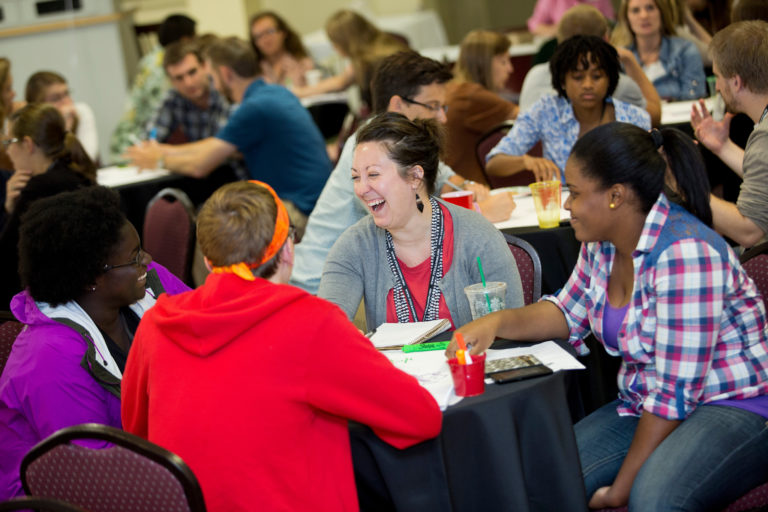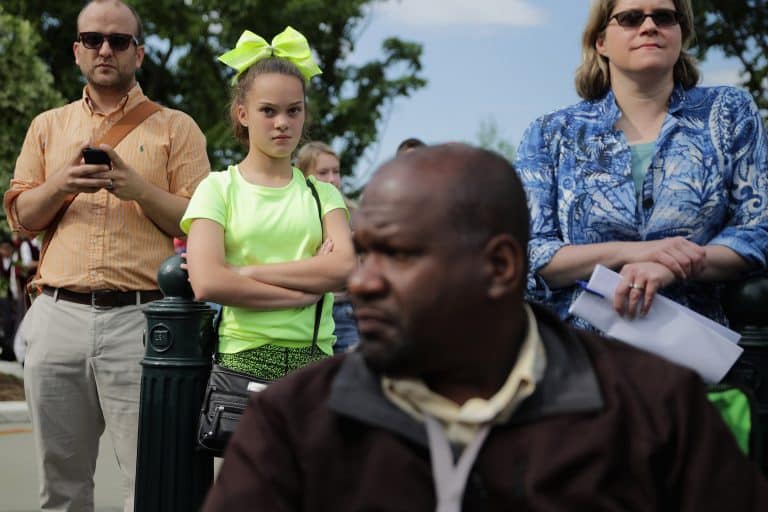
Image by The Fund for Theological Education.
Permaculture and Polarization: The Case for Diversity
The social psychologist Jonathan Haidt touched on something that I’ve been thinking a lot about recently — our increasing political and cultural polarization in the United States, and how we rarely encounter the “other” any longer. I reflect on this with an agricultural metaphor — that we are becoming monocultures. Just as that isn’t the best thing for ecosystems, it’s not great for communities of people either.
A distinctive practice of permaculture designers is creating plant guilds. These are communities of plants that work together symbiotically. The idea here is that we want to mimic nature. What plants do we usually find together in the forest or by the stream bed? We never see tomatoes sprout up in perfect rows in nature, that’s for sure. In nature things are a little more chaotic, but also organized in their own way. It’s not a linear organization, as we in Western culture are used to, but organization based on more important things like needs and yields of each member of a community: creating a healthy, balanced whole.
Probably the most famous plant guild is The Three Sisters, which author Toby Hemenway so aptly describes as a Native American triad of corn, beans, and squash:
“The trio qualifies as a guild because each of these plants supports and benefits the others. The cornstalks form a trellis for the bean vines to climb. The beans, in turn, draw nitrogen into the air, and via symbiotic bacteria convert the nitrogen to plant available form. These nitrogen-fixing bacteria, scientists have recently learned, are fed by special sugars that ooze from the corn roots. The rambling squash, with its broad leaves, forms a living parasol that densely covers the ground, inhibiting weeds and keeping the soil cool and moist. Together the Three Sisters produce more food, with less water and fertilizer, than a similar area planted to any one of these three crops in isolation.”
Together, they produce more than they ever could alone. The beauty of this truth can be applied to human communities as well. As I’ve been learning in my Permaculture Design Course, we can create people guilds too. We all have different strengths to contribute, and by carefully building our communities so every individual is able to both give and receive what they need to thrive, we create more than we ever could alone.
I’m fascinated by personality types and the differences in personality that exist in the world. While everyone is unique and there are infinite combinations of nature and nurture, personality typology like Myers Briggs and Enneagram can distill all of this down into 9-16 patterns that pretty much everyone fits into. People evolved in this way, together. A healthy community needs a mix of personalities — people with different strengths and ideas. What does this mean in our world today. We have so much personal mobility (at least in the United States and Europe) that we can now choose wherever we want to live, and that usually happens with people like us.
Obviously, this is life-giving and comes quite naturally. Who doesn’t like being around people like themselves? But, I think this comes at a price.
Our country is becoming more and more polarized politically, and, since our politics are based heavily on geography, this makes a certain sense because we are more and more polarized geographically as well. If you’re a liberal, creative type who likes the city but also the outdoors, you might be attracted to Seattle or Portland. If your faith means everything to you, you might prefer to live in a place that supports you in such a way. If you like smaller government you might move to a state with lower property taxes.
This conversation can go on and on, but the main point is that people seem to be sorting themselves geographically by what is important to them politically and socially. Not just on a city level, but even on a neighborhood level. Before we were so mobile, we had to just deal with where we were born and the people that were planted in that community. So maybe we didn’t have the same level of creativity or innovation that endless movement and exchange of ideas brings, but we might have been slightly more open to other people’s opinions. Our communities might have been a little more balanced. Choice is liberating on an individual level, but can be debilitating on a global level.
The idea of people guilds gives us a tool for how to think about our choice of where to live, and how to build community. We’re becoming monocultures of personality. Just like monocultures aren’t healthy for plants — they are more susceptible to disease, require more external inputs, etc. — they aren’t healthy for people either. We need to create polycultures of people as much as we do of plants. With The Three Sisters as an example, we can choose to create dynamic and symbiotic communities that will help us meet our needs more locally, help us grow as individuals to become more open and accepting of difference, and most importantly become more resilient.

